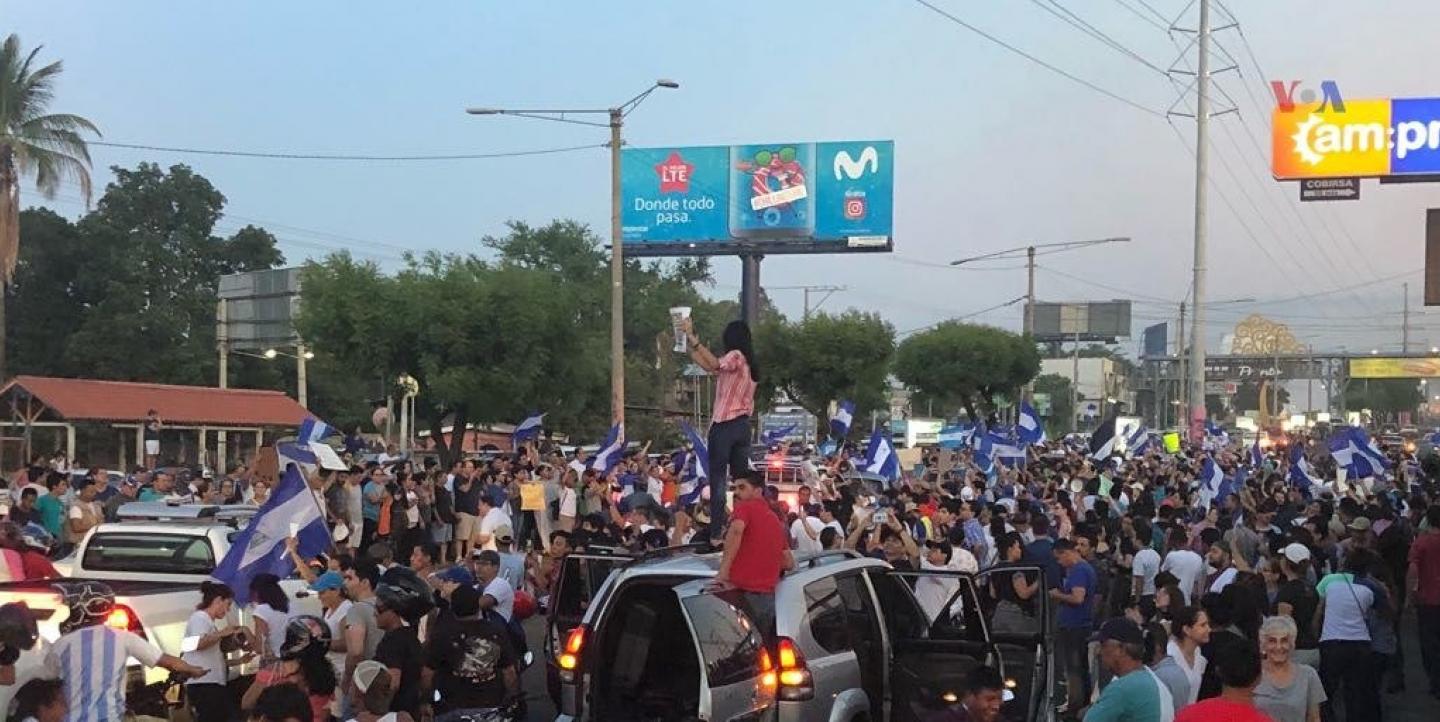Since mid-April, Nicaragua has been immersed in a political and humanitarian crisis. More than 250 people have been killed and hundreds injured, according to a report from the Inter-American Commission on Human Rights (IACHR).
However, President Daniel Ortega continues to reiterate his refusal to hold early elections. Once called the safest country in Central America, Nicaragua has become a place where citizens and protesters risk their lives.
Journalists have also suffered during the crackdown. The police and paramilitary gangs have assaulted reporters, stolen their equipment, set fire to radio stations and censored networks that are not aligned with the Sandinista party.
Digital innovation as a response to crisis
The internet has changed the rules on how we communicate. Even in situations fraught with misinformation, users have the opportunity to find the truth. For this reason, social networks have been crucial to collect proof and to organize the social movement #SOSNicaragua.
Nicaraguan journalists, developers and others have been using digital innovation to create platforms to host all the information that has surged during the crisis.
Such is the case of Protests in Nicaragua, a website that gathers international and verified news about the Nicaraguan crisis in different languages.
“Social networks are an effective platform to distribute content, but it can be confusing and lacks context,” said co-founder Carlos Roberto Fonseca. “We decided to collect real content produced by international media outlets.”
They chose WordPress to host their site because of its simplicity and easy collaboration. “These kinds of platforms allow [people] to easily share information in a way that is quick and inexpensive, using social networks as a bridge,” said co-founder Mayra Amador.
“The new wave of innovation projects [in Nicaragua] has surged because people have been physically repressed. These have forced us to find innovative ways to make an impact without exposing ourselves [to violence],” said Isabella Sevilla, creator of the website Nott a Blogger. “As a result, we have practiced our freedom of speech virtually.”
Her project compiles photographs and slogans from the Nicaraguan uprising. All the compiled material comes from content creators on social media. By tracking #SOSNicaragua on Twitter, she was able to get in touch with aspiring photographers and online activists. Her project also compiles statistics from verified NGOs and media outlets to keep the audience updated about the number of people injured, missing and killed.
Sevilla said that she chose a digital platform “to have information that will endure and is accessible to most people inside and outside the country.”
The amount of breaking news each day has made it difficult to keep track of events, which is why a group of anonymous Nicaraguans started SOS Nicaragua Report. The website includes a multimedia timeline with the main events that occured since the protests started; protest-inspired art; a space to leave testimonies; a section for memes and more.
“The creation of these platforms are a form of protest,” said one of SOS Nicaragua’s creators. “Remember that Nicaragua’s media is practically owned by the government, so it’s a way to tell your side of the story and fight against fake news published by official media.”
Building a more innovative Nicaragua
“Technology and the internet have been very valuable during these hard times,” Sevilla said. “They have given us the power and authority to condemn injustices to organizations such as the Organization of American States. It’s empowering.”
In fact, users have alerted the IACHR about attacks. IACHR’s investigative team in Nicaragua took immediate action to intercede based on these reports. Social media has been an effective way to ask for transportation, food and medicine for the victims.
“Sixty-one percent of the population is under the age of 31,” said one of the team members behind SOS Nicaragua Report. “During this crisis, we understood that technology — especially the internet — could help us make a bigger impact by complementing the activities being held in public spaces.”
Nicaragua still has a lot to learn about the use of technology and digital platforms. However, its people have proven that crisis can be opposed with new forms of collaboration and sharing information.
Main image CC-licensed by Wikimedia Commons via Voice of America.

